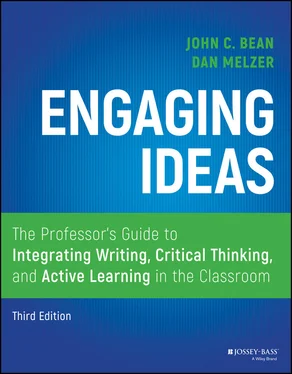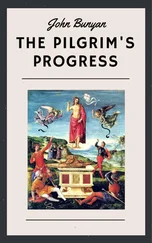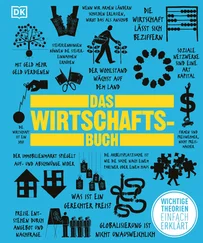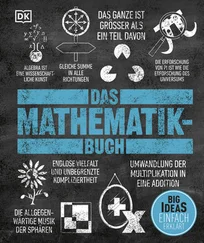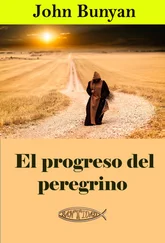Why Don't Students Revise?
If one of our major goals is to teach thinking through revision, we need to understand more clearly why students do not revise. Our first tendency may be to blame students' lack of motivation or their ineffective time management. They do not revise because they are not invested in their work or do not care about it or simply put off getting started until the night before a paper is due. But other explanations should also be considered.
For example, one hypothesis, influenced by Piagetian theory, argues that revision requires the ability to “decenter” (Bradford, 1983; Kroll, 1978)—that is, to think like a reader instead of a writer. One of Piaget's observations is that persons identified as concrete operational reasoners have difficulty switching perspectives. If sitting in the back of a classroom, for example, a person may have trouble sketching the room from the perspective of a lecturer standing in front. By analogy, novice writers may have difficulty imagining their drafts from a reader's perspective . If a passage seems clear to the writer, he or she believes that it ought to be immediately clear to the reader also. Novice writers may simply not recognize their reader's confusion and consequently not recognize the need to fill in gaps, to link new information to old information, or to arrange material in the order needed by readers.
Related theories emphasize students' lack of familiarity with academic genres or with the complexity of addressing rhetorical problems (purpose, audience, genre) as well as subject matter problems. What drives revision for mature writers is their awareness of the complex conversation that a piece of writing must join—how its argument must accommodate objections raised by a skeptical reader, for example, while also following the conventions of the genre and contributing something new to the conversation. Expert writers can concentrate on only one or two problems at a time. They need multiple drafts in order to work through their many different goals and rhetorical constraints.
Another contributing factor may be the difficulty of getting a bird's‐eye view of a draft when composing on screen. During the early days of word processing, several researchers (Daiute, 1986; Hawisher, 1987) showed that although word processing facilitates sentence‐level revision as well as some larger‐scale revisions such as additions, deletions, and block moves of text, it may actually discourage major reconceptualizing of a text—the kind of global revision that leads to substantial dismantling and rewriting. By revising from the screen rather than from a hard copy, writers see only narrow windows of their text rather than the whole. Global revision often requires the writer to revisit earlier passages, to compare, for example, a point being made on page 7 with what was forecast on page 2. Such a bird's‐eye overview of a text is easier with hard copy than on screen, where scrolling backward is time‐consuming. (The difference between revising on screen versus paper is analogous to reading on an e‐reader such as Kindle versus on paper, where you can quickly flip to the table of contents, the index, or previous pages.)
Whatever the cause of students' failure to revise, teachers need to create an academic environment that encourages revision. The importance of revision has been highlighted by the NSSE/WPA research on writing assignments that contribute to deep learning (Anderson, Anson, Gonyea, and Paine, 2015, 2016). This research identifies the presence of “interactive elements” in an assignment as the first of three criteria for best practices. These interactive elements include building into the assignment opportunities for in‐class brainstorming, peer review, teacher feedback on drafts, or visits to a writing center. (See chapter 4for further discussion of the NSSE/WPA research.)
Fifteen Suggestions for Encouraging Revision
In the spirit of this research, we offer fifteen suggestions for promoting revision by building interactive elements into an assignment or a course.
1 Profess a problem‐driven model of the writing process. Instead of asking students to choose “topics” and narrow them, encourage students to pose questions or problems and explore them. Show how inquiry and writing are related.
2 Give problem‐focused writing assignments. Students are most apt to revise when their essays are responses to genuine problems, whether provided by the teacher or posed by the student. See chapter 4for advice on creating writing assignments that guide students toward a problem‐thesis structure.
3 Create active learning tasks that help students become posers and explorers of questions. Students need to be seized by questions and to appreciate how the urge to write grows out of the writer's desire to say something new about a question or problem. Through classroom activities that let students explore their own responses to questions, students rehearse the thinking strategies that underlie revision. Chapters 6through 10focus on strategies for active learning.
4 Incorporate low‐stakes exploratory writing into your course. Chapter 5suggests numerous ways to incorporate exploratory writing into a course. Exploratory writing gives students the space, incentive, and tools for more elaborated and complex thinking.
5 Build talk time and writing center conferences into the writing process. Student writers need to talk about their ideas with others by conversing with classmates, friends, or writing center consultants/tutors. Writers need to bounce ideas off interested listeners, to test arguments, to see how audiences react, and to get feedback on drafts. In this regard, consider having students talk through their ideas in small groups before they write their first drafts. On many campuses, the writing center director can arrange for writing center consultants/tutors to conduct tutor‐led brainstorming or draft workshops in class. Also encourage one‐on‐one writing center consultations. One of the most important services offered by writing centers is the opportunity for students to talk through their ideas in the early stages of drafting.
6 Use reflections and other metacognitive strategies to help students self‐assess their own drafts. Recent research has shown how reflective writing can help students develop metacognitive awareness of their own thinking processes. This awareness, in turn, helps writers assess the strengths and weaknesses of a work in progress, to recognize problem areas in a draft, and to plan revision strategies to address them. The more students learn to self‐assess their own drafts (and to assess their peers' drafts during peer reviews), the more they will revise their work without instructor intervention. Chapter 11treats reflective writing and self‐assessment in more detail.
7 Intervene in the writing process by having students submit something to you. Take advantage of the summarizable nature of thesis‐based writing by having students submit to you their problem proposals, thesis statements, nutshelling statements, or self‐written abstracts. Use these brief pieces of writing to identify persons who need extra help. Much of this work can be done online through electronic bulletin boards or other courseware. See chapter 13for further details.
8 Build process requirements into the assignment, including due dates for drafts. If students are going to stay up all night before a paper is due, make that an all‐night session for a mandatory rough draft rather than for a finished product.
9 Develop strategies for peer review of drafts, either in class or out of class. After students have completed a rough draft, well in advance of the final due date, have students exchange drafts and serve as readers for each other. See chapter 11for advice on conducting peer reviews.
Читать дальше
